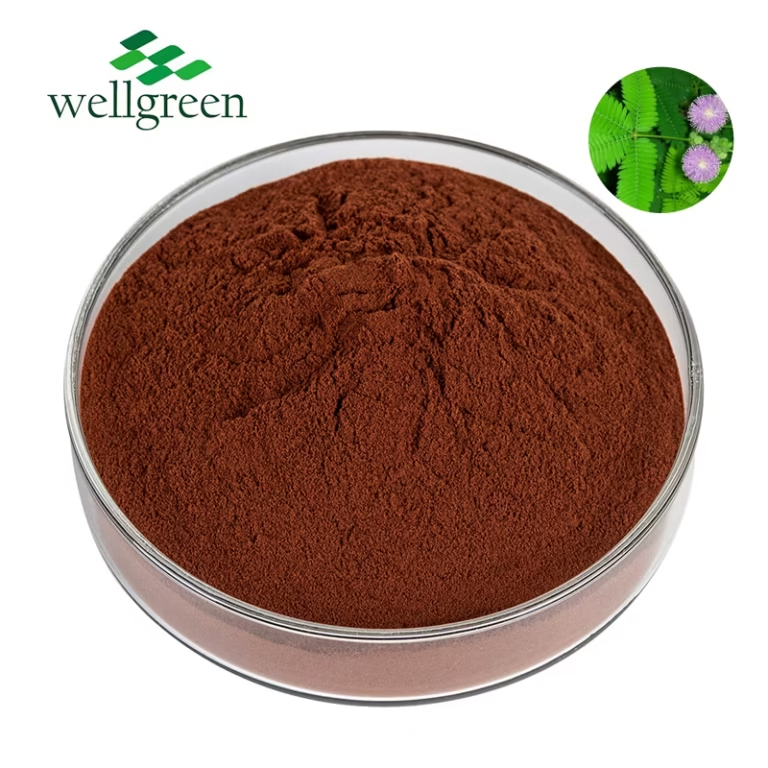Mimosa Hostilis: A Sacred Plant for Indigenous Cultures
Wiki Article

Mimosa hostilis is a significant plant deeply ingrained in the traditions of various Indigenous cultures across South America. For centuries, it has been utilized by indigenous communities for its comprehensive spiritual and medicinal applications. The root bark, known as teonanácalli, is particularly revered for its hallucinogenic effects, believed to trigger profound visions that facilitate transformation.
Through rituals, the plant spirit of Mimosa hostilis is invoked, guiding individuals on a quest of self-discovery and connection with their inner selves. The knowledge about this sacred plant has been shared through generations, preserving the rich cultural heritage and wisdom of these communities.
MHRB Extract: Unveiling the Secrets of Mimosa Hostilis
Mimosa hostilis, a lush plant indigenous to the Americas, has captured the attention of both researchers for centuries. This intriguing species harbors within its roots a potent extract known as MHRB, which has gained significant attention in recent times.
MHRB extract is celebrated for its potential, often associated with spiritual exploration. Traditional knowledge suggest a long history of MHRB use in ceremonial rituals.
- Scientists continue to investigate the pharmacological properties of MHRB, seeking to illuminate its full range of effects.
- The nuances surrounding MHRB usage require responsibility. It is vital to seek guidance from knowledgeable individuals before engaging in any practices involving this powerful compound.
Exploring the Ethnobotanical Uses of Mimosa tenuiflora
Mimosa tenuiflorae, commonly acknowledged as "mimosa", holds a significant position within the ethnobotany tradition of diverse communities. Its wide-ranging properties have been explored for centuries in traditional medicinal practices, as well as in rituals. The roots of this remarkable plant possess a rich repertoire of bioactive chemicals believed to exhibit medicinal effects.
From alleviating ailments like inflammation to boosting spiritual awareness, Mimosa tenuiflora has long been revered for its profound effect on human life.
ALook into the Chemistry and Pharmacology of Mimosa Hostilis Root Bark
Mimosa hostilis root bark boasts a complex chemical profile, primarily known for its high concentrations of alkaloids. Among these, dimethyltryptamine (copyright) and harmaline are particularly important. These substances possess a range of pharmacological effects, including hallucinogenic effects. The bark contains diverse alkaloids, like alpha-harmine, which may contribute to its overall pharmacological profile.
The traditional employments of Mimosa hostilis root bark span a spectrum of therapeutic purposes, particularly in South American societies. However, it is crucial to understand that scientific research on the effectiveness of these uses remains scarce.
Harnessing the Power of copyright with Mimosa Hostilis
Mimosa hostilis, a plant native to South America, has captured the interest of researchers and individuals alike for its potent compounds, particularly dimethyltryptamine, or copyright. copyright is a powerful psychoactive substance known for producing intense experiences. By ingesting the bark of Mimosa hostilis, one can access the realms of copyright-induced experiences. It is crucial to remember that copyright is a strong substance and should be treated with caution.
- Ethical use is paramount, and researching from experienced individuals or knowledgeable sources is highly advised.
- The pathway of copyright can be both insightful but also potentially overwhelming. It is essential to prepare both mentally and physically for the outcomes that may arise.
copyright from Mimosa hostilis offers a unique opportunity to journey within the depths of consciousness, possibly leading to personal growth and insight.
Ethical considerations Using Mimosa Hostilis
The utilization of Mimosa hostilis for personal purposes raises a myriad of moral questions. While some argue that its sacred significance warrants respect and tolerance, others oppose its use due to potential harmful consequences. It's crucial to approach this complex issue with thoughtfulness, taking into account the social contexts and potential risks. A informed perspective is essential for navigating the ethical landscape surrounding Mimosa hostilis.
Raising Mimosa Hostilis: A Guide for Growers
Embarking on the journey of cultivating Mimosa Hostilis can be a gratifying experience for the dedicated grower. This intriguing plant, indigenous to tropical regions of the Americas, has earned significant notoriety in recent years due to its peculiar properties. Prior to click here your cultivation quest, it is crucial to comprehend the specific needs this plant demands to thrive.
- Ensuring adequate sunlight is paramount for healthy Mimosa Hostilis growth. These plants prosper in unfiltered sunlight, ideally receiving a minimum of eight hours per day.
- Ensuring well-drained soil is essential to prevent root rot, a common problem that can devastate your plants. A mixture of loamy soil with composted matter is ideal.
- Frequent watering is necessary, but be mindful not to overwater your Mimosa Hostilis. Allow the top inch of soil to harden before providing another watering.
The Shamanic Traditions Surrounding Mimosa Hostilis
Deep within the sacred forests of South America, the spiritplants of vision have been practiced for generations. Among these powerful allies is Mimosa Hostilis, a sacred plant revered by the shamanistic traditions of indigenouscommunities. It contains within its roots a river of knowledge, guiding spirits on their journeys into the otherworld.
The elders understand that Mimosa Hostilis is not simply a medicinal agent; it is a gateway between dimensions, connecting us to the ancient energies that weave all of creation.
Confronting Legal Issues with Mimosa Hostilis
The legal status of mimosa hostilis differs significantly from one jurisdiction to another. This means that the legality of possessing, using, or raising this plant is reliant upon your particular place of residence.
Furthermore, laws and regulations surrounding mimosa hostilis are constantly changing. It is therefore vital that you thoroughly research the current legal framework in your area.
- Talking to a legal professional who specializes in cannabis laws is highly recommended.
- Keeping informed about any changes to the law can help you avoid any potential legal issues.
Mimosa Hostilis and Spiritual Exploration: A Journey Inward deepening
The ancient wisdom whispered through the rustling leaves of Mimosa Hostilis calls to explorers on a sacred quest. Journeying upon this path is to reveal hidden dimensions within, where the veil between worlds blurs. It's a powerful experience that guides the soul, revealing truths latent beneath the surface. As you merge with the essence of this sacred plant, be prepared for revelations that shift your perception.
- Accept the unknown with an open heart and a eager mind.
- Release all expectations and allow yourself to be guided by the current.
- Remember, this is a path of self-discovery. Have faith in your own inner compass.
The wisdom gained through Mimosa Hostilis vibrates long after the experience has ended. It is a gift that can alter your life in profound and eternal ways.
Understanding the Risks and Advantages of Mimosa Hostilis
Mimosa hostilis is a plant native to South America, gaining increasing attention for its potential pharmacological properties. While it contains valuable compounds like copyright, responsible for its psychoactive effects, it's crucial to approach this plant with respect. Understanding both the potential downsides and the positive aspects of Mimosa hostilis is essential for safe and informed use. Potential side effects can include psychological distress, emphasizing the need for thorough research, responsible consumption, and a safe environment.
- It's important to consult with a healthcare professional before using Mimosa hostilis or any products derived from it.
- Proper dosage is crucial to minimize potential risks.
- Be aware of the legal status surrounding Mimosa hostilis in your locality.
- Always prioritize safety and well-being when exploring the use of this plant.
 Report this wiki page
Report this wiki page